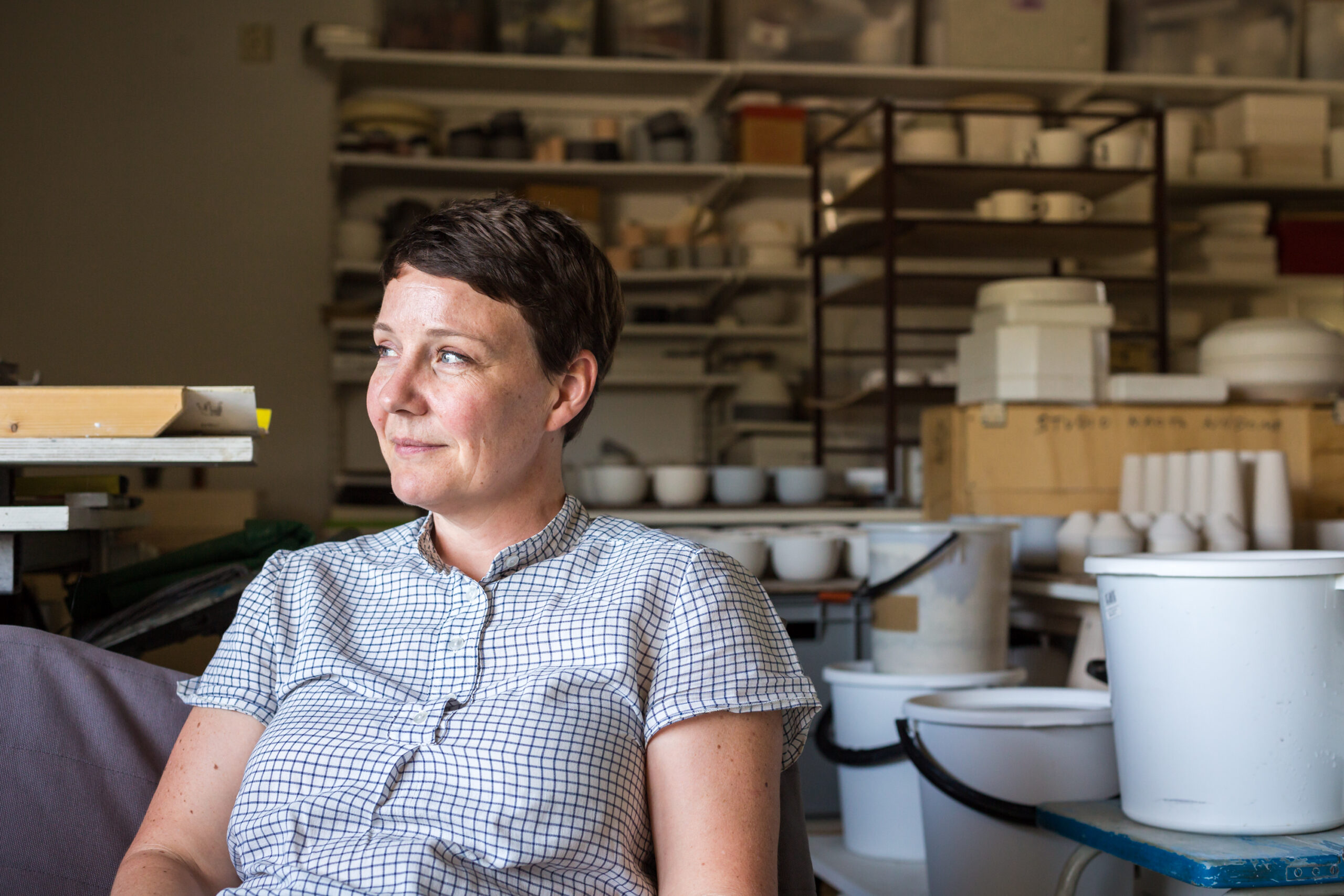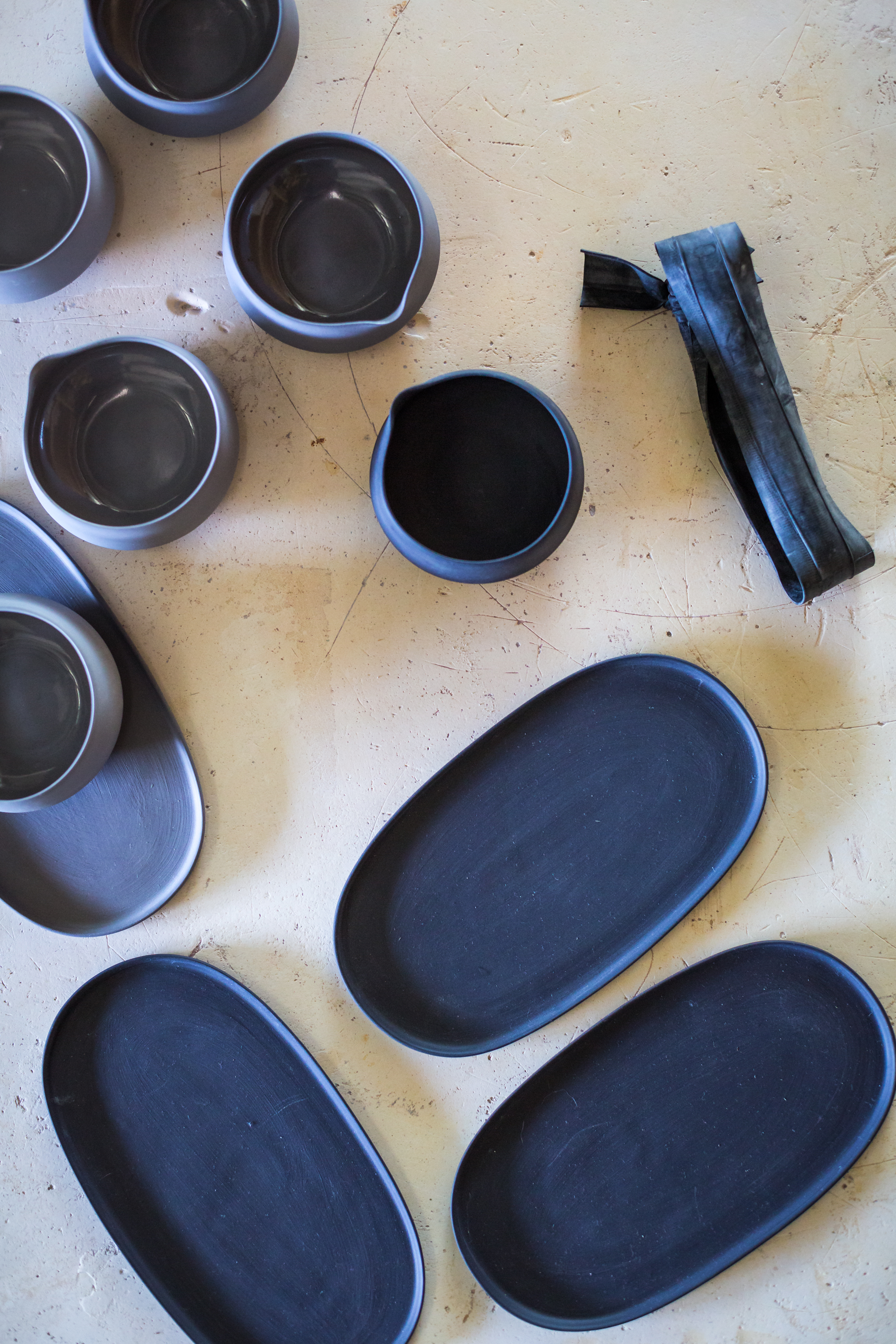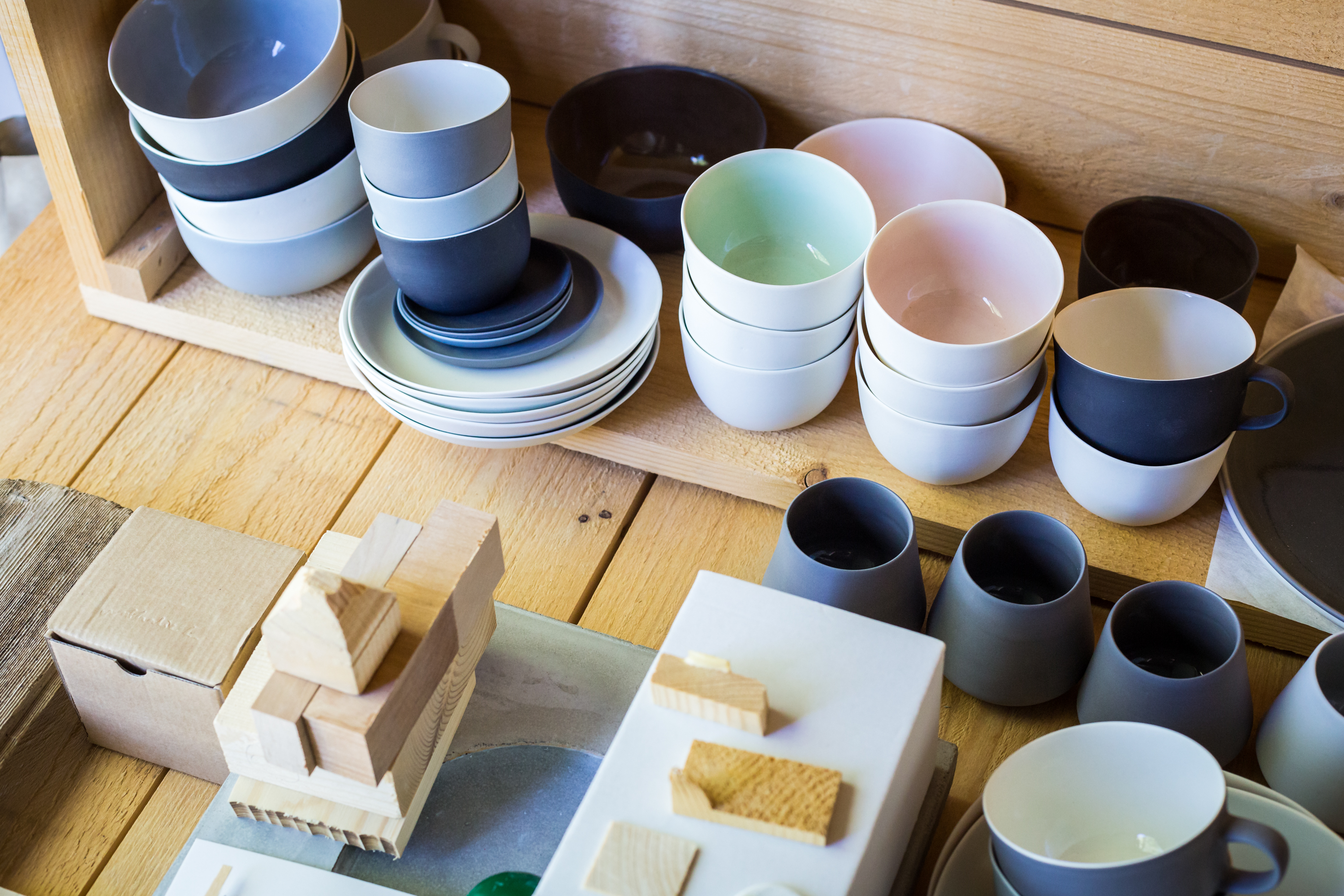Weekly Studio: Nathalie Lautenbacher

The Weekly Studio series visits the workplaces of interesting people. This week Weekly visits ceramist Nathalie Lautenbacher.
Let’s start with a quick overview of your background.
I suppose I started on my path with ceramics back at art high school in Helsinki. It was there I chose ceramics and it turned out to have been a good decision for me. To sit there, working on the coiling technique or polishing a bowl, was just so gratifying. It was one of my high school lecturers who told me that you could study ceramics at university and that it could be a career. I had other creative interests, painting and illustration, but I applied to the ceramics department at TaiK (Aalto University).
It’s amusing because one of my reasons for applying to ceramics was that I thought it could be a financially secure and stable profession compared to other creative fields, but I realised after a relatively short period of studying that it is similar to working as an independent artist. You have to work very hard to be financially sustainable. If you think about it, there’s something very risky about having to choose just one material at 18. Will you regret such a decision later in life? But I’m still content that I chose ceramics, because I do feel that I can express very clearly what I want to express with the material. For me, it has been a journey which has deepened as I continue to work.

In general, your work seems to combine craft techniques with small scale production. What about this particular method of working – between fine art ceramics and mass production – interests or suits you?
Given that I like to design utilitarian objects – because they can become part of peoples’ everyday lives – it has become more and more important for me to oversee the complete process myself. What interests me is variety in making, so that I don’t get bored with the production. It’s also important to me that I have the ability to control and influence each stage of the object myself. For example, in finishing off the rims. Even if a piece is cast in a mould, I bend the rims ever so slightly.
In industrial production, this kind of hand-finished detailing is impossible, because everything has to be consistent. If you create something on a small scale, then I think the pieces should reflect the fact of their production method. I don’t think there’s a point in attempting to copy perfect industrial and clinical forms. I want the pieces to look handmade, but also to have a lightness to them so that they look as if they were easily made.
It’s interesting, though, that in more industrial methods of production, one person will perform one task – like glazing or fitting a handle – if it isn’t being done by a machine, but you perform all the tasks yourself.
Yes, but I also design the pieces, so one task leads directly and naturally to the next. Because of this, it’s difficult for me to hand over certain phases of production to someone else. I do have someone to help me with casting, but that’s about it for the moment.

What makes it so difficult for you to have help?
It’s a question of very slight details in the finishing. Where does the glaze end at the rim? When I bend the pieces, how much should they be bent? At what point is the bend taken too far? In finishing the rims, how sharp should the edge be? Maybe the need to control is a bit strong, but I like to do these processes myself. Very subtle changes and small decisions make a big difference in the finished piece. I do think it is important to try to learn how to communicate and pass on these details to others, but I’m still working on how best to do this.


Are these things which can be measured or something you just feel?
I probably could measure them, but I don’t really have any interest in doing so.
So, in not measuring, your methods leave more room for the subjective?
It’s the subjective methods which I trust the most. That’s also probably why I feel the need to do most if not all of the process myself. Of course, there’s a different set of concerns when making art pieces as opposed to tableware. For example, in the installation I made with Naoto Niidome for the 6 Scenes of Beauty exhibition, these aren’t vessels used for drinking so the rims were left unfinished. The processes of judgement in terms of finishing are different, although the qualities of the material are equally interesting.
Do you enjoy both of these types of making?
Yes, I do, but they are different process and different ways of thinking. Often with corporations there is so much waiting and a lot of back and forth to approve a design. With art pieces, you don’t have that same process of negotiation. It’s just making, often hand making, since they are unique pieces. When I started in ceramics, the first technique I practiced was hand pinching and coiling. It’s time consuming, but absorbing. The exhibition that I have on show at the moment in Lokal gallery, in a way it is like going back to basics for me. The pieces are urn shapes made by coiling, so a very different technique to the casting processes used for making tableware pieces. I make them one piece at a time and so they each have a unique character.

On your website, there’s a comment about the slow techniques you use, but how you wish you could slow down even further. What do you mean by that?
It’s about being able to take the time to fully experience the making. Not to always be making in a hurry. There are certain aspects which I find almost contemplative. Certain stages of carving the surface of an almost-dry bowl, for example. What I hope is that the feeling of making an object in the full enjoyment of the process is evident in the finished piece. At the same time, of course, it’s so difficult to actually do that. In a way, it’s also an ideal for me, this longing to slow down and be able to appreciate what I’m doing. But it’s not something I’m able to achieve very often. In a way, there’s something crazy about trying to do something slowly when you are often in a hurry. But then, when I actually go to the studio and start working, I completely forget about the outside world. It’s like a kind of escapism.
Do you think this tension shows in your work?
No, I don’t think it shows. But sometimes they might perhaps lie…
Creative careers are not as easy as they sometimes seem to the outside wold?
This is absolutely true. And I think this is partly why I have focused on deepening and improving with one particular material. I don’t feel the need to change material all the time. Clay has offered enough playground to me for far. I also try to give other work – things like the website etc. – to people who can do it better than me. I concentrate on the making. Of course, I have also been teaching since very early in my career.

This is something I wanted to ask you about. You have been a lecturer at Aalto since 2001. Is it important for you to combine teaching and practice?
Teaching is very sociable work. I meet so many excited and devoted new students every year. With many of them, we share similar interests. We have chosen the same field, of course, so we have a lot in common. Some of them occasionally become my future colleagues and or close friends. Since I’ve now taught for so long, it’s wonderful to see people who I taught to use the plaster wheel for the first time now working in the field. It helps keep me engaged, especially since practice is very solitary work. There’s also the fact that, at the University, we work on developing the field of design more broadly and education has a key role to play in how this development evolves.
Do you keep the two separate, then?
I do tend to keep a certain distance between teaching and my own work. In education, it’s important to help students find their own strengths and individual approaches towards work. To find their own paths. But having my own artistic practice is essential for staying connected to the field and passing up-to-date knowledge to the students.
I do think learning from a model is natural, but it’s important that students find their own way of working little by little. When I was a student, I admired the work of some of my older schoolmates, Jatta Lavi, for example. Her understanding of the material was fascinating. Works by ceramicists Kati Tuominen-Niittylä and Kristiina Riska also had a strong impact.
You mentioned your exhibition at Lokal, which is probably the only shop/gallery in Helsinki to support craft makers. What are your thoughts on the market for small-scale handmade craft objects in Helsinki?
It’s clearly a very small field. The fact that Lokal is the only one is actually quite remarkable. In ceramics, you know we don’t have a single dedicated gallery in all of Finland. It is a small market and all the people working in this field really have to go abroad and find a market elsewhere.
Do you think that it would be possible to make a living in Finland as a full-time small-scale ceramics producer without teaching on the side?
I actually had the chance to test this method for six months relatively recently. I had a bit of FCF support, but somehow the limits remain. Even if I was working full time, I couldn’t significantly increase the amount of production. It’s partly because the processes are quite time consuming, but somehow the sales weren’t doubling or tripling even if I worked on the business full time.
Although, I do think it would be possible to work on ceramics production full time, but financially difficult. I think the income would be low. Basically, it would be possible, but something of a struggle. There’s also the fact that I would be obliged to produce more efficiently and I’m certain it would affect how I produce. At the moment, I choose which projects to take and where to exhibit. I am learning to refuse as I can’t say yes to all orders. I have to say to some clients that it can take up to six months to fulfil an order. In one sense, I think I’ve been able to find my most important clients as a side effect to this way of working, because some seem happy to wait. I think it might have a positive effect on client relationships.
And what about your studio in Espoo? Do you have much time to work there?
I have my own studio now, which is not far from my home. It’s situated in a 1980’s industrial estate in Espoo where a variety of companies work from. For me, it’s like a monastery. I have 40 square metres of space all to myself and a small garden outside the studio. In the summer, I cultivate some flowers and a few vegetables.

To change the subject to something a bit broader, although Finland has a great deal of respect for its traditional ceramics heritage, there seems to be less appreciation for contemporary ceramics. Do you have any thoughts as to why?
This is very generalising, but in Finland people tend to trust the taste of institutions rather than their own taste. You see something similar in the fact that many times people go abroad and it’s only when they come back that they are respected. In the Finnish manufacturing tradition, we have had these big companies – Artek, Marimekko, Fiskars, Arabia, Iittala. They all have a very strong history. In a way, they have had a very strong monopoly on everyday objects as they appear in nearly every home. They are considered national treasures and have been very successful abroad, so it’s easy to buy into the idea that they are very good. I think independent designers working on their own might be left unrecognised, perhaps it’s difficult to recognise the work of individuals in a country the size of Finland. But in general, I would encourage people to be more appreciative of their individual taste. We see this improving all the time and my own experience has been that the appreciation of different materials and contemporary crafts is increasing. Maybe it’s a reaction to a very digitised world. And this is something design students are very interested in, so there is much more on the horizon.
https://nathaliel.fi/